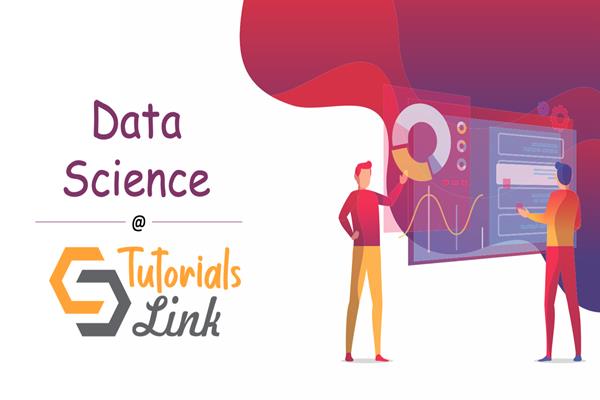Analytics in 2025: 8 Tools That Will Define the Future
Introduction
Data is super important today, and it helps businesses make smart choices. In 2025, it’s not just about looking at old data, but also about guessing the future and making plans. New technologies like AI, machine learning, and easy-to-understand charts are helping a lot. Let’s check out 8 new tools that will help us understand data better and faster.

Power BI: Transforming Raw Data into Impactful Insights
Microsoft Power BI has already made waves in the analytics community, and by 2025, its capabilities are set to soar even higher. With continuous enhancements in real-time data streaming and AI-powered visualizations, Power BI is evolving into an indispensable tool for businesses of all sizes.
What makes Power BI a frontrunner is its user-friendly interface combined with powerful integrations. From sales forecasts to customer sentiment analysis, businesses can turn complex datasets into interactive dashboards that everyone from executives to frontline staff can understand and act upon. Imagine a retail manager tracking live inventory updates during a flash sale or a healthcare administrator monitoring patient flow in real time — Power BI is making such scenarios everyday realities.
Tableau: Storytelling Through Data
Tableau’s strength lies in its ability to turn data into compelling stories. As 2025 approaches, the platform is expanding its focus on augmented analytics, where AI assists users in uncovering deeper insights without needing advanced technical skills.
Tableau’s natural language processing capabilities enable users to ask questions and get visual answers instantly. For instance, a marketing team can simply type, "What was the highest performing campaign last quarter?" and receive a detailed visual breakdown. The ease of use democratizes data analysis, ensuring that insights are not confined to data scientists alone but are accessible to anyone seeking answers.
Moreover, with integrations into cloud ecosystems and AI-driven analytics, Tableau is ensuring that businesses not only visualize data but also anticipate future trends with remarkable accuracy.
Google Looker: Data Exploration Reinvented
Google Looker is redefining the standards of business intelligence by bringing powerful data exploration to the fingertips of decision-makers. What sets Looker apart is its ability to work seamlessly across multi-cloud environments, making it the ideal choice for organizations juggling diverse data sources.
In 2025, Looker is expected to enhance its predictive modeling and machine learning integrations, allowing businesses to forecast customer behavior and market trends more precisely. Whether it's an e-commerce brand aiming to personalize shopping experiences or a logistics firm optimizing supply chains, Looker empowers teams to make data-driven decisions faster than ever before.
The platform’s deep integration with Google Cloud also ensures that scalability is never a limitation, no matter the size of your organization or the complexity of your data needs.
SAS Viya: Advanced Analytics for Complex Challenges
SAS Viya has always been recognized for its robust statistical capabilities, and in 2025, it continues to evolve as a leader in advanced analytics. Known for handling complex data models, SAS Viya excels in industries like finance, healthcare, and manufacturing, where high-level precision is non-negotiable.
What makes SAS Viya stand out is its ability to process massive volumes of data in real time, offering actionable insights almost instantly. For example, financial institutions use it to detect fraudulent transactions in seconds, while healthcare providers leverage its predictive analytics to improve patient outcomes.
As machine learning and AI algorithms become more sophisticated, SAS Viya is integrating them into its ecosystem, enabling users to automate decision-making processes and drive efficiency across operations.
Qlik Sense: Bridging the Gap Between Data and Action
Qlik Sense is making significant strides in the analytics world by focusing on active intelligence — the continuous integration of real-time data into decision-making processes. Unlike traditional analytics tools that offer historical insights, Qlik Sense ensures that businesses can respond to changes as they happen.
With associative data models and AI-enhanced analytics, Qlik Sense allows users to explore data freely, uncovering hidden relationships and insights. For instance, supply chain managers can instantly see the impact of a supplier delay on delivery timelines and customer satisfaction.
As data ecosystems become more complex in 2025, Qlik Sense’s capability to connect various data sources and present a unified view of information will be critical for agile and informed decision-making.
IBM Cognos Analytics: AI-Powered Decision Support
IBM Cognos Analytics is embracing the future by deeply embedding AI throughout its platform. In 2025, Cognos is not just a reporting tool but an intelligent advisor that assists users at every step of their data journey.
The platform’s AI capabilities help automate data preparation, recommend visualization formats, and even highlight anomalies that require attention. For example, a sales director can receive automated alerts about sudden drops in regional performance, complete with AI-driven explanations and suggested actions.
Additionally, IBM’s commitment to ethical AI ensures that Cognos Analytics provides transparent and explainable insights, a crucial feature as organizations increasingly prioritize data ethics and compliance.
Zoho Analytics: Simplifying Complex Data for Businesses
Zoho Analytics continues to gain traction among small and medium enterprises by offering a powerful yet accessible analytics solution. In 2025, Zoho is expanding its capabilities to include advanced AI predictions, automated data blending, and deeper integrations with third-party applications.
Businesses can use Zoho Analytics to effortlessly track KPIs, monitor customer journeys, and identify growth opportunities. For instance, a digital marketing agency can integrate Zoho with their CRM and ad platforms to get a holistic view of campaign performance, customer engagement, and ROI in a single dashboard.
What sets Zoho apart is its balance of affordability and functionality, making high-quality analytics accessible to businesses that previously considered such tools out of reach.
SAP Analytics Cloud: Unifying Planning and Analytics
SAP Analytics Cloud (SAC) is poised to play a pivotal role in 2025 by unifying analytics, planning, and predictive insights on one platform. This all-in-one approach empowers businesses to seamlessly move from insight to action without switching between multiple tools.
SAC’s strength lies in its integration with the broader SAP ecosystem, making it invaluable for organizations already invested in SAP solutions. Whether it’s financial forecasting, workforce planning, or market analysis, SAC enables stakeholders to collaborate in real time and make strategic decisions backed by data.
Moreover, SAC’s predictive analytics capabilities help organizations not only understand what is happening but also prepare for what’s next, making it an essential tool for future-ready enterprises.





